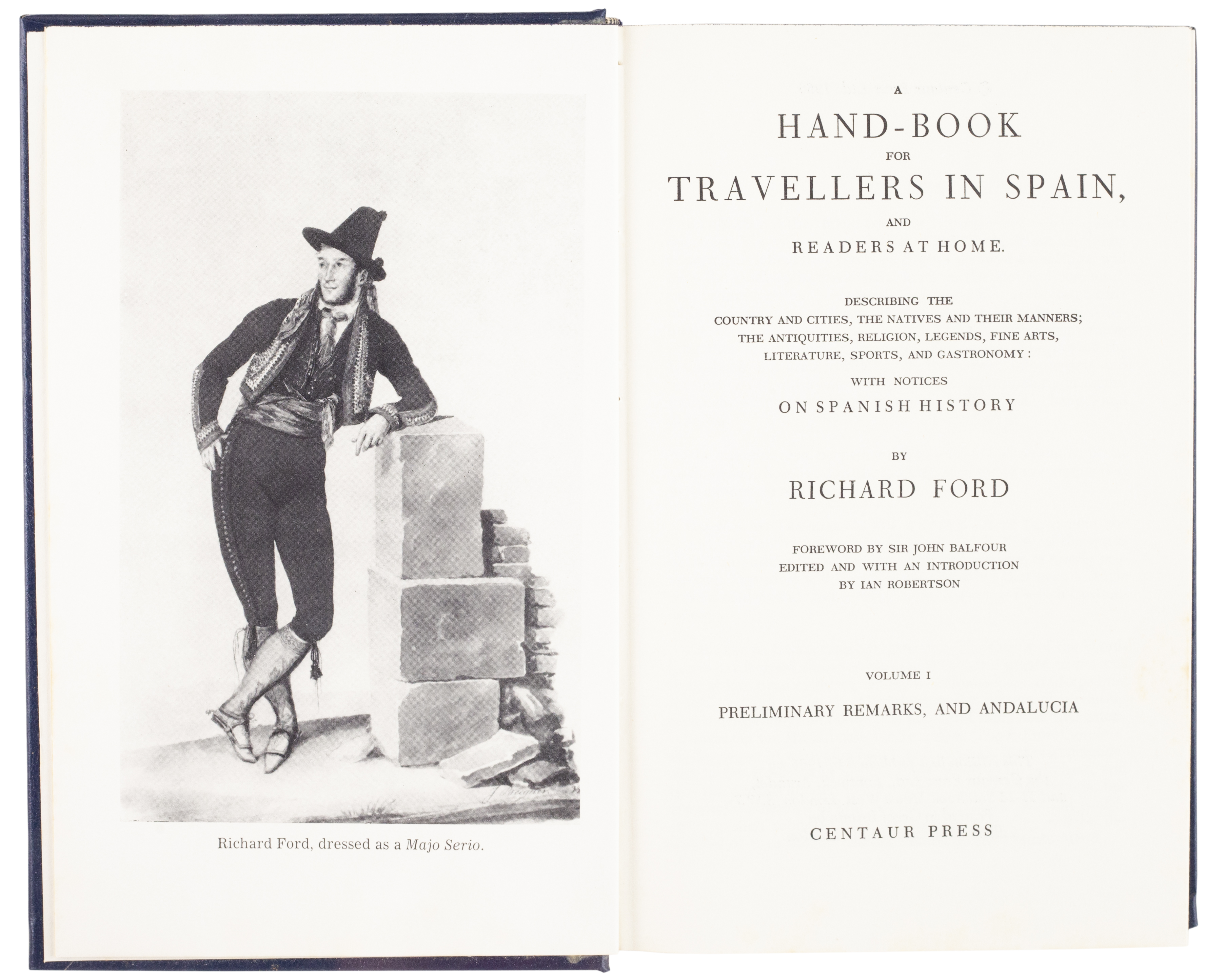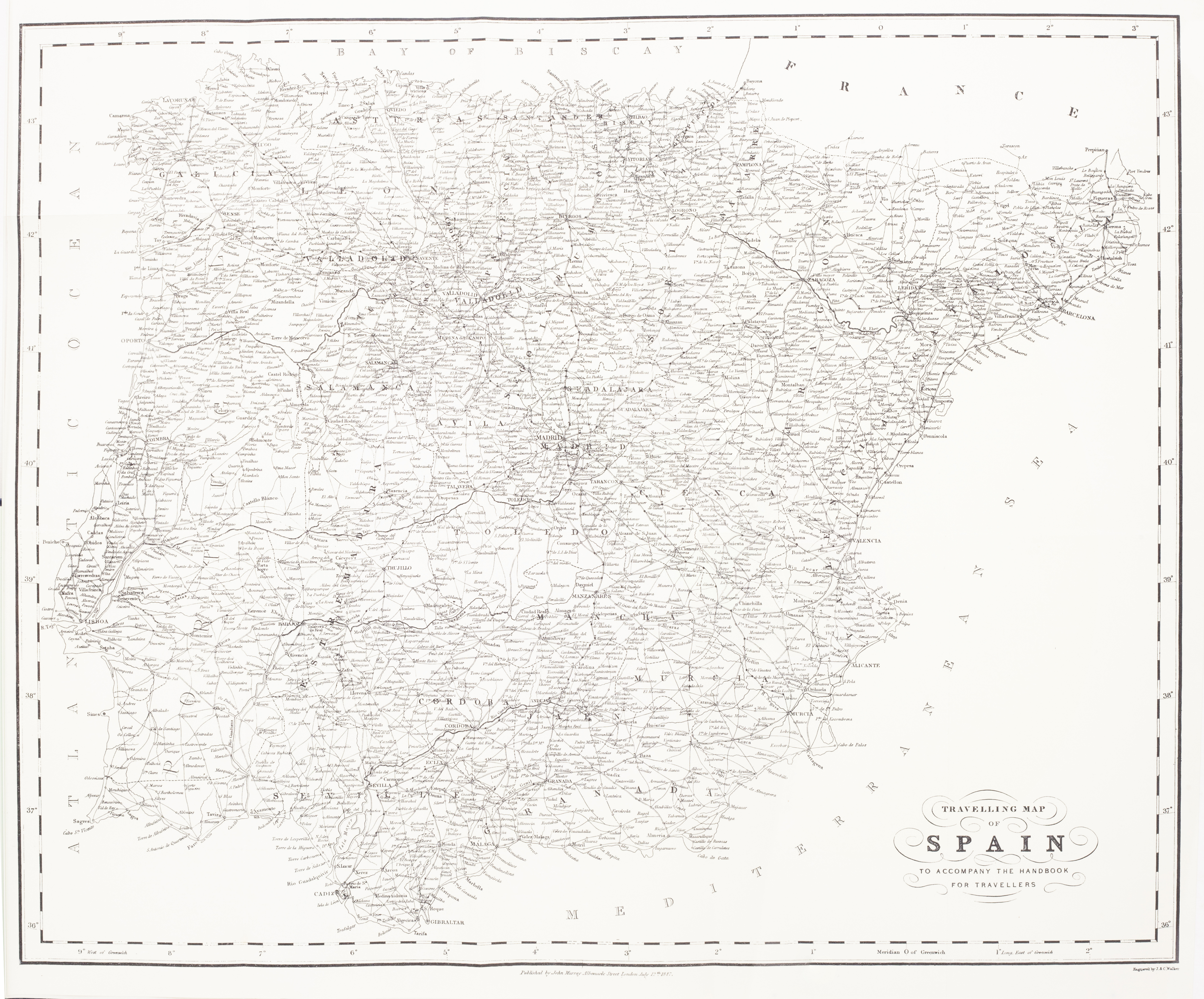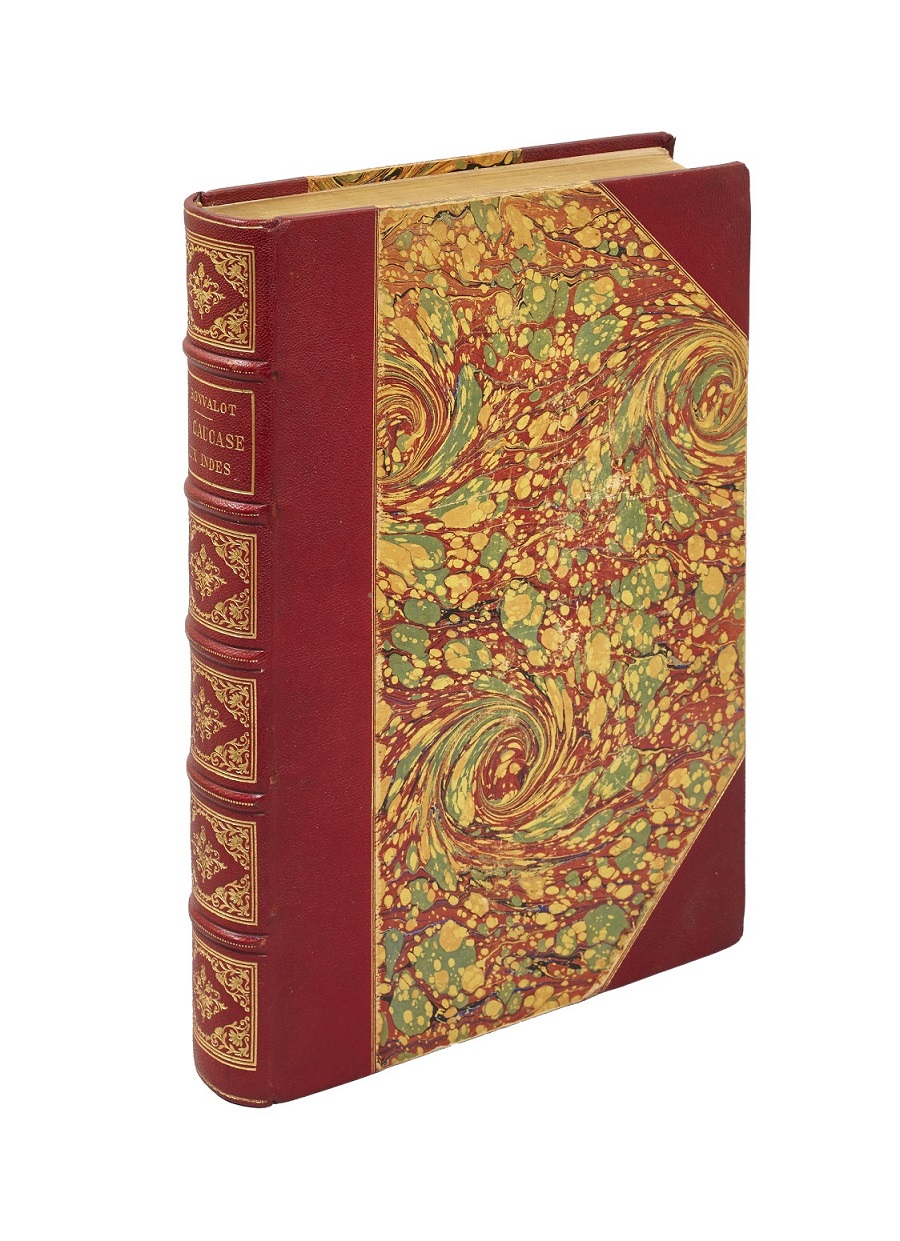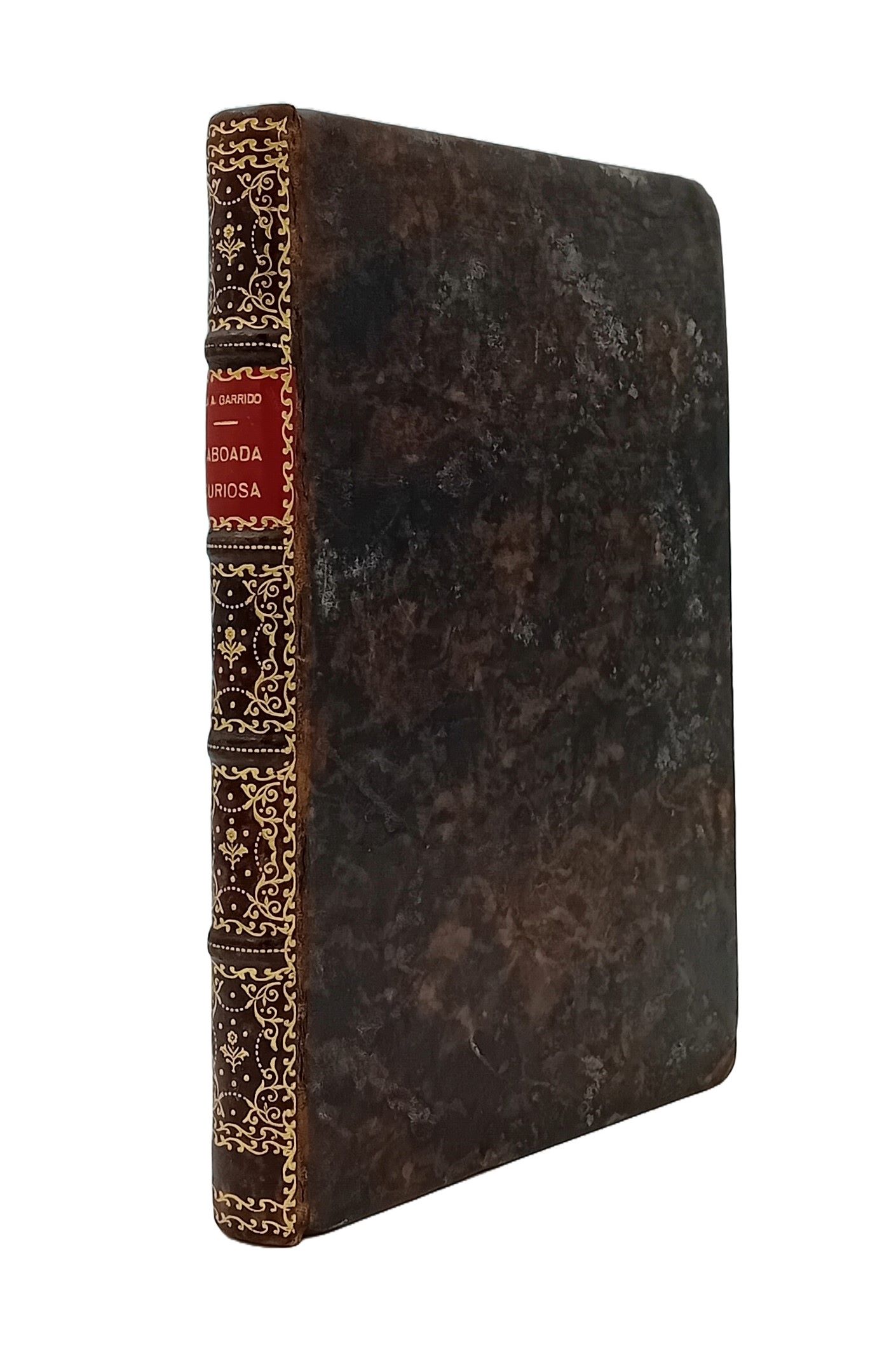


FORD, Richard (and Ian ROBERTSON, editor).
A hand-book for travellers in Spain, and readers at home. Describing the country and cities, the natives and their manners; the antiquities, religion, legends, fine arts, literature, sports, and gastronomy: with notices on Spanish history. Foreword by Sir John Balfour. Edited and with an introduction by Ian Robertson.
[Arundel and London,] Centaur Press, [1966].
3 vols, 8vo, pp. xviii, [ii], 481; viii, 483–1032; viii, [1033]–1507, [1, errata]; with a frontispiece in each volume and two folding maps; occasional very pale foxing or light spotting along fore-edges, but essentially as new; original dark blue cloth, spines lettered in silver, top edges stained blue.
£120
US $149 €139
If you wish to order more than one copy of this publication please make an enquiry. Add to basket Make an enquiry

Added to your basket:
A hand-book for travellers in Spain, and readers at home. Describing the country and cities, the natives and their manners; the antiquities, religion, legends, fine arts, literature, sports, and gastronomy: with notices on Spanish history. Foreword by Sir John Balfour. Edited and with an introduction by Ian Robertson.
Richard Ford’s classic Hand-book for travellers in Spain, with an introduction by Ian Robertson and a revised index.
Ford’s knowledge of Spain was based on his experiences there from October 1830, when he and his family moved to Seville for the sake of his wife’s health, to just before the outbreak of the First Carlist War in 1833 when they returned to England. ‘During his three years in Spain, Ford made numerous excursions throughout Andalusia, and three longer expeditions: in spring 1831 to Madrid, Talavera, and Badajoz; in autumn 1831 via Valencia, Barcelona, and Saragossa to Madrid and back; and in summer 1832 on horseback via Mérida, Yuste, and Salamanca to Santiago de Compostela, Oviedo, León, Burgos, and Bilbao. While on these journeys, of which he remarked that a riding expedition for civilians in Spain was “almost equivalent to serving a campaign” – referring to those of the Peninsular War, several battlefields of which he visited – many notebooks were filled with descriptions of the monuments and works of art he saw, and he also made over 500 drawings and watercolours, largely devoted to Seville and Granada’ (ODNB).
Within days of the work’s first publication in 1845, ‘Ford was being lionized as the perceptive and articulate author of a most comprehensive and accurate account of that country, and one unlikely to be ever superseded. Although opinionated and occasionally acerbic, his perennially fresh descriptions and observations appear here at their most spontaneous, and stimulating. As later affirmed by Sir William Stirling Maxwell, “So great a literary achievement had never before been performed under so unpretending an appellation”, which “took its place among the best books of travel, humour, and history, social, literary, political, and artistic, in the English language” (The Times, 1858), and that judgement holds. The influence of this masterpiece, reprinted in 1966, has been profound’ (ibid.).

